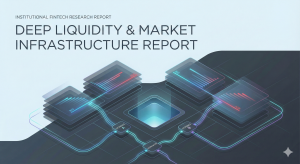Great — based on the structure and tone of the provided Q4 2022 article, here’s a full-length, professional 2023 Q1 Blockchain Industry Report drafted in the style of a financial institution analyst. It includes headers and subheaders for SEO clarity and narrative structure. After the article, I’ve also included suggested keywords and a proposed cover image concept.
2023 Q1 Blockchain Industry Report: Stability Amid Aftershocks, Signs of Renewal
SEO Keywords: blockchain Q1 2023 report, crypto market recovery 2023, DeFi 2023 analysis, NFT trends Q1 2023, FTX aftermath, Web3 regulation 2023, crypto venture capital Q1, digital assets outlook
Executive Summary: Rebuilding Confidence After the Storm
Following a turbulent close to 2022 marked by the collapse of FTX and widespread insolvencies, Q1 2023 was a quarter of stabilization and recalibration. While investor sentiment remained cautious, key metrics such as DeFi total value locked (TVL), NFT trading volumes, and developer activity showed early signs of resilience. At the same time, regulatory scrutiny intensified globally, reshaping how projects manage compliance, custody, and disclosures.
Macroeconomic Backdrop: Inflation Eases, Rates Still High
Q1 2023 kicked off with inflation cooling in major economies, particularly the U.S. and EU, though interest rates remained high. The Federal Reserve maintained a hawkish tone, targeting core inflation and wage growth. Equity markets experienced modest gains, contributing to improved—but still tentative—risk appetite across crypto assets.
Venture capital deployment into blockchain projects slowed significantly compared to Q1 2022, but deals were more focused and targeted, especially in infrastructure, L2 scaling, and real-world asset tokenization.
DeFi: Gradual Recovery and Strategic Realignment
The DeFi sector began to show signs of cautious optimism. TVL across major protocols rose 16% from the December 2022 bottom, led by Ethereum’s L2s and liquid staking derivatives. Lido, in particular, captured attention as Ethereum’s Shanghai upgrade approached, prompting increased staking interest.
Notable trends:
- Layer-2 protocols such as Arbitrum and Optimism outperformed Layer-1s in relative growth, with TVL up 35% and 28% respectively.
- The proliferation of Restaking and modular DeFi primitives marked a new chapter of composability.
- Cross-chain interoperability protocols like LayerZero and Axelar secured new funding, signaling investor belief in multi-chain architecture.
NFT Market: From Collectibles to Utility-Driven Applications
NFT trading volumes remained significantly below 2022 peaks but began to stabilize in Q1. Blur, a new NFT marketplace targeting pro traders, disrupted OpenSea’s dominance, introducing liquidity-based bidding systems.
Key observations:
- Blue-chip NFT collections retained value; CryptoPunks and BAYC remained resilient.
- Corporate experimentation with NFTs increased, with brands like Starbucks, Nike, and Red Bull Racing launching Web3 loyalty programs and digital collectibles.
- NFTfi—financial use cases around NFTs, such as collateralized lending—showed early traction.
GameFi and Web3: From Hype to Product-Market Fit
GameFi projects shifted strategy from tokenomics-first models to gameplay-focused ecosystems. Studios emphasized sustainability, aiming to retain users without relying on financial incentives alone.
Noteworthy updates:
- ImmutableX, Ronin, and TreasureDAO led L2 gaming infrastructure development.
- New games prioritized on-chain identity, dynamic NFTs, and community governance.
- Investment in Web3 gaming declined 43% YoY, but projects like Shrapnel and BigTime raised substantial funding.
Institutional Adoption & Infrastructure: Tokenization Gains Traction
While crypto-native activity cooled, institutional interest grew around tokenization of real-world assets (RWA) and stablecoin infrastructure.
Key trends:
- JP Morgan, Fidelity, and Franklin Templeton expanded pilots using public and permissioned blockchains.
- Stablecoin volume remained dominant among all crypto transactions, with USDT and USDC maintaining 80% market share.
- Rollout of CBDC testnets in APAC and LATAM accelerated central bank-led innovation.
Regulation: The Great Reshuffling
Regulators in the U.S., Europe, and Asia focused on three primary areas: stablecoin legislation, centralized exchange transparency, and DeFi classification.
Highlights:
- The SEC issued Wells notices to several U.S.-based crypto platforms.
- MiCA (Markets in Crypto-Assets) framework moved closer to ratification in the EU.
- Hong Kong opened new licensing pathways, aiming to become a regulated Web3 hub.
Developer Ecosystem & Funding
Despite market headwinds, developer activity remained strong:
- GitHub commits across major blockchain ecosystems increased by 8% QoQ.
- Hackathons and grants from foundations like Solana, Avalanche, and Near incentivized early-stage builders.
- AI-integrated tooling (e.g., ChainGPT) emerged as a new vector for innovation.
VC funding in Q1 2023:
- Total crypto VC funding: ~$2.1B (down from $9.8B in Q1 2022)
- Early-stage focus, particularly in zero-knowledge, account abstraction, and DePIN (decentralized physical infrastructure)
Conclusion: The Dawn After Darkness
Q1 2023 marked a transitional period for the blockchain industry. While the wreckage of 2022 still lingers, emerging signs of innovation, institutional engagement, and regulatory clarity are providing the foundation for a more resilient cycle. Risk appetite is returning—but with discernment. As the ecosystem matures, projects that prioritize security, utility, and transparency are likely to define the next wave.
The pain of 2022 cleared out excesses. Q1 2023 showed us that what remains is a leaner, wiser, and more focused industry.




